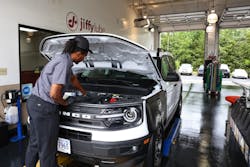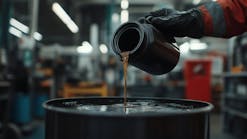What does speed of service mean to you? Whether you are in a franchise or independent business model, the time that a car spends in your bay is money. The time that it takes for you to process each customer changes based on needs and what you are offering as a service. One thing that does not change is the need for a method to your madness and a team capable of hitting your KPIs for profitability.
In this month’s article, I will touch on a few of our service styles and the positives and negatives that can come from each. As an independent, look at some of these models and decide what is best for you to remain viable in a time where a new shop is popping up on each corner year over year.
The Traditional Quick Lube
In the traditional quick lube, who are focused on driving the oil changes and building customer counts each day by “turning and burning” is what most consumers believe is the way all locations are in the industry. They may check for some simple, quick services like wipers or air filters, but they are not doing a deep dive into maintenance items that a customer may or may not know are needed at that moment.
Their financial profit is primarily driven by the number of customers they can get through the door in a single day. Because of this system they care more for the quantity of customers they have than for their quality of customer service, in some cases. Everything is done to spend the least amount of time and money working on any one car. Even the most crucial steps can get skipped over while they speed through the service to get cars in and out as fast as possible.
Now, there are advantages in this type of service as well, especially for a smaller operator. With minimal services offered, you do not have to keep as much product on the shelves. This allows you to keep your assets as a lower level and more cash flow in your pocket. Secondly, if you are training your teams, you will have techs who are exceptionally good at what they do and will be able to operate with less people on your payroll at any given time. These cost savings will keep your customer that is on the go happy with your service each time.
The Full-Service Model
Many of our customers today are very techy. They want things to be done quickly, efficiently, and in as little time as possible. They are looking for a do it all service center. Do I need tires? Can I get brakes done here? I need to get my fluids changed for my service records. These are all things that you can and will hear at a full-service facility. With extended drain intervals on many vehicles today and a higher push to be green, the ability to do things other than an oil change are paramount to stay relevant long term.
There are pitfalls to this model, and just like with the traditional model, I will go over a few of these. Cost is a primary concern. You will need to purchase machines, lifts, tools and so much more to perform these duties. This is a substantial number in some cases that does not have an immediate ROI. You must hire and keep trained and certified mechanics or technicians, all at a cost. There is also a risk of warranties that is higher than just switching out the oil. If you make a mistake on a brake system, it may mean thousands of dollars in repairs. So, know before you go this route, the costs are going to be a deal breaker for some.
Now, the advantage to this system is that you can be that all in one shop that today’s consumers are looking for. You can make a serious amount of money in this business. You will also find that you will get a lot of word-of-mouth advertising on social media platforms from satisfied customers or even customers that did not know that you did those services. Once you pay off your equipment, there is good profit in things like rotations, alignments, and balancing services. Keep the best people you can for this work and watch the cash flow rise.
These are just some examples of the two major operating models in our industry. Many of you may be tied to a certain model based on franchise agreements and the like. If you are independent, do your research and look at what is best for you are your business. Just remember that whichever way that you go, the automotive business is ever changing and that is something that we must do as well to stay relevant!






